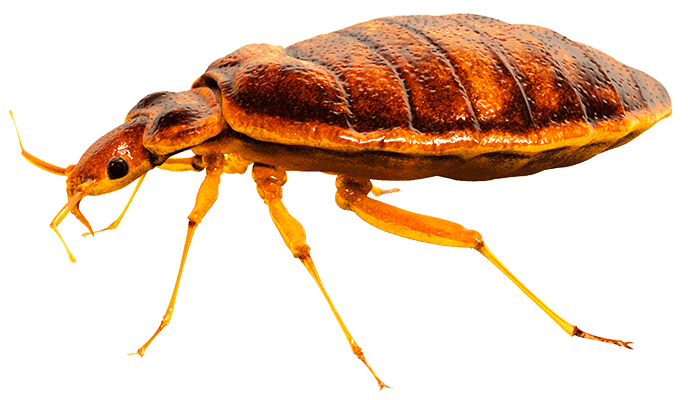Sign up for Newsletter
Signup for our newsletter to get notified about sales and new products.

Bed bugs are generally nocturnal in habit and feed only on the blood of mammals including humans unfortunately. Although they are capable of existing without food for up to six months they will feed on average once a week depending on temperature and food availability.
The eggs of the bed bugs are yellowish white in colour and approximately 0.5mm in length and 0.2 mm in diameter. Under normal conditions the female will lay from 100-200 eggs at irregular intervals. These will normally hatch between one and three weeks later, although this can be longer.
Adult bed bugs are flat, oval, wingless creatures with segmented bodies and three pairs of legs. They are dark red or brown in colour and 1-5mm in length.
Adult bed bugs live up to four years or more and normally live and breed in the cracks and crevices of the building e.g. behind loose fitting wallpaper, cracks or grooves in woodwork and cracks in plasterwork. They may also be found in furniture e.g. buttons or stuffed leather, mattresses, hollow brass-work in bedsteads, the underneath of chairs, folds in the tops of curtains, bedding and undisturbed trunks or boxes.
Young bed bugs (nymphs) will hatch from the eggs and begin feeding immediately. Nymphs are much smaller than adults, approximately 1mm in length and are round with red eyes. As they grow they become darker and flatter. They will also shed their skins on several occasions to accommodate their growth.
Bed bug infestation may be detected by presence of bites on your body (though this could also be caused by many other insects or reasons) The musty, sour, unpleasant smell which is invariably present when a room is heavily infested. Their presence may also be detected by minute black droppings. Small blood stains on bedding.
There are many options for treatment, but all should only be considered following a detailed survey by a professional pest control operative. If the infestation is misdiagnosed or underestimated it will ultimately fail, meaning the insects will spread and increase in numbers to other rooms of buildings.
Treatments can range from anything from Cryogenics (freezing), Heat Treatment of affected rooms or furniture, Fumigation (the use of gas), and traditional insecticidal actions. It may also require the removal and disposal of heavily infested items of furniture.